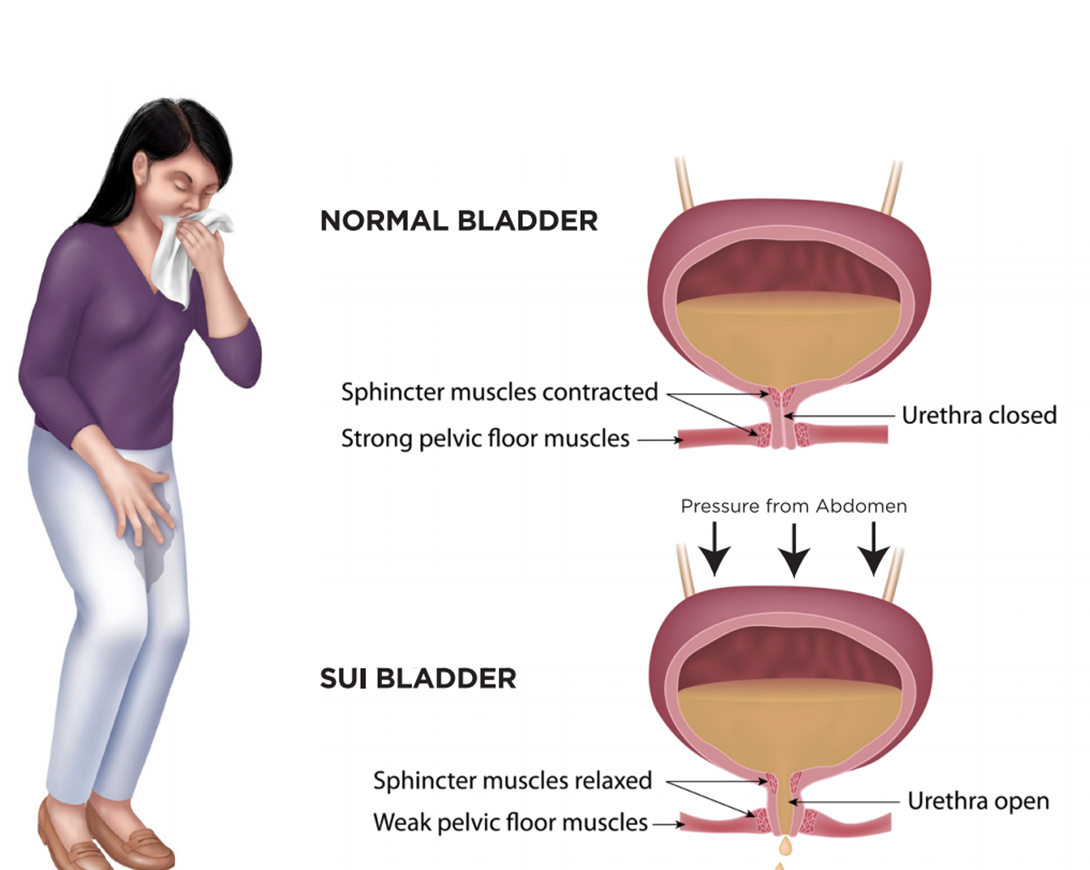A nurse is conducting education on urinary incontinence at a senior center. The nurse is discussing lifestyle changes that are associated with an improvement in urinary incontinence. The nurse includes which of the following interventions? (Select all that apply.)
Increase in physical activity
Blood sugar control
Smoking cessation
Weight reduction
Correct Answer : A,C,D
Choice A: Increase in physical activity
Physical activity can strengthen the muscles that help control urination. Exercises such as Kegels can specifically target these muscles, leading to improvements in urinary incontinence.
Choice B: Blood sugar control
While blood sugar control is important for overall health and can prevent complications from diabetes, it is not directly associated with improvements in urinary incontinence.
Choice C: Smoking cessation
Smoking can lead to coughing which puts pressure on the bladder and can exacerbate symptoms of urinary incontinence. Therefore, smoking cessation can lead to improvements.
Choice D: Weight reduction
Excess weight can put pressure on the bladder and surrounding muscles. Losing weight can reduce this pressure and improve symptoms of urinary incontinence.
There is no Choice E in this case. Each of these interventions can contribute to overall health and may indirectly affect urinary incontinence, but Choices A, C, and D are the most directly related to improvements in this condition.

Nursing Test Bank
Naxlex Comprehensive Predictor Exams
Related Questions
Correct Answer is D
Explanation
Choice A reason: A detached retina is a serious condition that occurs when the retina, the light-sensitive layer of tissue at the back of the eye, separates from its underlying support tissue. It can cause vision loss or blindness if not treated promptly. However, it does not usually cause intense headaches or bloodshot eyes, but rather flashes of light, floaters, or a curtain-like shadow over the visual field.
Choice B reason: Macular degeneration is a common eye disorder that affects the macula, the central part of the retina that is responsible for sharp and detailed vision. It can cause blurred or distorted vision, especially in the center of the visual field. However, it does not usually cause intense headaches or bloodshot eyes, but rather difficulty reading, recognizing faces, or seeing colors.
Choice C reason: Cataracts are cloudy areas in the lens of the eye that can impair vision. They are usually related to aging, but can also be caused by other factors such as diabetes, trauma, or radiation. They can cause blurred or dim vision, sensitivity to light, or halos around lights. However, they do not usually cause intense headaches or bloodshot eyes, but rather gradual and painless vision loss.
Choice D reason: Angle-closure glaucoma is a type of glaucoma that occurs when the drainage angle of the eye becomes blocked, causing a sudden increase in the pressure inside the eye. It can damage the optic nerve and lead to permanent vision loss if not treated immediately. It can cause intense headaches, bloodshot eyes, blurred vision, nausea, vomiting, or seeing rainbow-colored rings around lights. It is a medical emergency that requires immediate attention.
Correct Answer is ["A","B","D","E"]
Explanation
Choice A reason: This is a correct answer because Alzheimer's disease affects the brain cells and causes them to degenerate and die. This leads to a gradual decline in cognitive abilities, such as memory, language, reasoning, and problem-solving.
Choice B reason: This is a correct answer because Alzheimer's disease interferes with the daily activities and routines of the affected person. They may experience a decline from their previous level of functioning, such as forgetting appointments, misplacing items, or getting lost.
Choice C reason: This is an incorrect answer because easily frustrated is not a specific outcome of the early stage of Alzheimer's disease. Although some people with Alzheimer's disease may become frustrated, irritated, or angry due to their cognitive impairment, this is not a universal or diagnostic symptom.
Choice D reason: This is a correct answer because Alzheimer's disease affects the short-term memory first, causing the person to forget recent events, conversations, or names. This is called mild memory loss, and it is one of the most common signs of the early stage of Alzheimer's disease.
Choice E reason: This is a correct answer because Alzheimer's disease affects the frontal lobe of the brain, which is responsible for executive functions, such as planning, organizing, decision-making, and judgement. This leads to impaired judgement, such as making poor financial choices, neglecting personal hygiene, or acting inappropriately.
Whether you are a student looking to ace your exams or a practicing nurse seeking to enhance your expertise , our nursing education contents will empower you with the confidence and competence to make a difference in the lives of patients and become a respected leader in the healthcare field.
Visit Naxlex, invest in your future and unlock endless possibilities with our unparalleled nursing education contents today
Report Wrong Answer on the Current Question
Do you disagree with the answer? If yes, what is your expected answer? Explain.
Kindly be descriptive with the issue you are facing.
